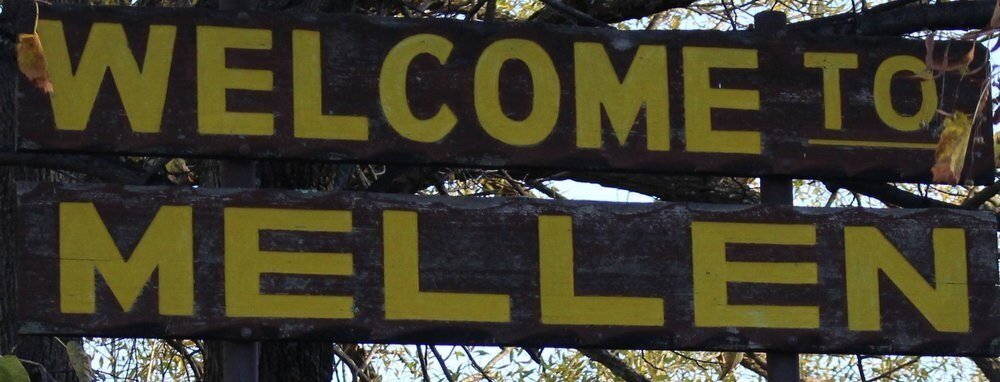Cryptid Profile: Washington's Eagle
In February 1814 on a trip up the Mississippi River, famous American naturalist and artist, John James Audubon (namesake of the Audubon Society) laid eyes upon a bird that he had never seen before. This was not unusual for Audubon for he would identify 25 new species of birds during his lifetime, but what made this bird unique is that it has only ever been veritably seen four times.
Audubon and a Canadian fur trader were making their way up the Mississippi when an unidentified raptor flew overhead. The fur trader was the first to sight it and shouted out to Audubon to take notice. Audubon watched the bird fly around for a few minutes and took note that it resembled an immature bald eagle but he was not entirely sure if that was a correct assumption. The fur trader informed Audubon that these large birds have been sighted by other trappers and hunters of the Great Lakes region before, but that they were extremely rare. They were occasionally known to follow hunters so as to scavenge what was left behind from a kill, but were also seen diving into the Great Lakes to grab fish with their beaks. After hearing these distinctive traits about the unknown bird, and realizing that they did not fit with the behavior of either a bald eagle or a golden eagle, Audubon believed that this eagle flying overhead was a new and undiscovered species.
A few years later, Audubon sighted the eagle again in Kentucky while visiting a friend. While walking a trail, the bird flew up from a small enclosure and landed on a low tree branch. To prove the bird did in fact exist, Audubon took aim with his gun and slowly approached the bird and took a shot at it. The bird fell to the ground and was retrieved and studied. Both Audubon and his friend noted that the corpse they examined looked nothing like any large bird either of them had ever seen. Audubon gave the eagle the scientific name Falco washingonii in honor of Americas first president, George Washington. Audubon explained the reason he named the eagle after President Washington; “He was brave, so is the Eagle; like it, too, he was the terror of his foes; and his fame, extending from pole to pole, resembles the majestic soarings of the mightiest of the feathered tribe. If America has reason to be proud of her Washington, so has she to be proud of her great Eagle.”
Washington’s Eagle is described as standing 3ft, 7inches tall and having a wingspan of 10ft, 2inches (a bald eagle only stands around 2ft and has a wingspan around 7.5ft). It’s feathers were all brown and resembled the superficial outward appearance of an immature bald eagle (meaning that it lacked the white head and tail). The cere on the beak (the soft spot on the upper beak that contained the nostrils) did not resemble any known version seen on bald eagles and golden eagles. The scaling on the tarsi (lower legs) is uniform and has a pattern not seen on any other known species. Washington’s Eagle is also reported as building ground nests on rocky cliffs near water or in wooded areas (bald eagles are known to build nests high in treetops).
At first Washington’s Eagle was accepted as legitimate new species, but as time passed, many naturalists believed the existence of the bird was not true due to lack of sightings and more specimens/corpses to examine. Scientists accused Audubon of taking “sloppy measurements” of his shot specimen as well as “overstating the physical differences between his bird and other species.” Soon Washington’s Eagle was discredited and the consensus among scientists was that the bird was nothing more than a misidentified bald eagle, or possibly even a hoax and publicity stunt.
These accusations into the non-existence of Washington’s Eagle do not appear to take into consideration that Audubon made it his life’s work to document and categorize many different species of birds as scientifically and as accurately as possible. He knew the difference between bald eagles and golden eagles and kept extremely thorough and detailed notes in his diaries regarding every species he encountered (he was well aware that immature bald eagles started off brown and matured into the white head and tail feathers of a mature eagle). Also, when it came time to paint the accurate life-sized portraits of the birds he encountered (based on flesh and blood specimens he had in front of him), Audubon used a complex double grid system to guarantee dimensions. He achieved this by placing a grid directly behind the specimen as well as an identical grid on his canvas to match the specimen and image exactly.
Even after all the scientific controversy over the existence of Washington’s Eagle, could it still be alive and flying in modern times? From reports of the time back when the eagle was first discovered, it already appeared to be somewhat rare and due to the few sightings, it is assumed that the population numbers were already in the low count. This means that Washington’s Eagle could have gone extinct within the 200yrs since its scientific discovery. But many people do not believe this to be true due to the fact that giant eagle sightings have continued into modern day and have occurred regularly in Pennsylvania, Alaska, and the Great Lakes region.
With the documented historical sightings, portraits made of a body, eyewitness accounts by reputable scientists, and sightings that continue into modern times, Washington’s Eagle has been given the nickname “Bigfoot of the Sky”.
-The Pine Barrens Institute
*Image Credit: https://commons.wikimedia.org/wiki/File:Bird_of_Washington_(Audubon).jpg
Do you have a strange tale, family legend, or odd sighting you would like to report? Get in touch with us here to share what you know!
Want more monster stories in your life? If the answer is yes, then make sure to check out our book ‘Monsters In Print: A Collection Of Curious Creatures Known Mostly From Newspapers’, available now from Amazon!
Make sure to also check out our shop for official PBI shirts, totes, buttons, and stickers!



















